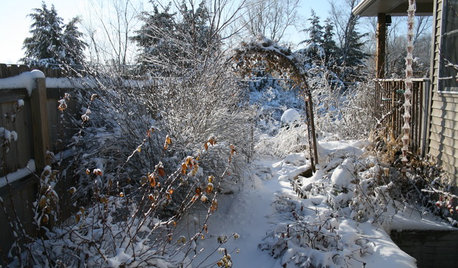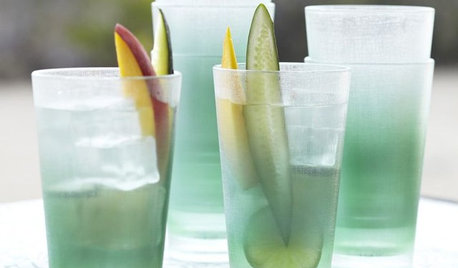invasives...if you can't beat em, eat em?
dirtgirl
18 years ago
Related Stories

MORE ROOMSLong, Cold Winter Days—Bring 'em On!
13 Inspiring Ways to Make Good Use of Nesting Season
Full Story
GARDENING GUIDES6 Plants That Beat Butterfly Bush for the Wildlife Draw
It's invasive, a nonnative and a poor insect magnet. Check out these better alternatives to butterfly bush in the garden
Full Story
HOUSEPLANTS8 Houseplants You Can't Kill
They're forgiving and let you forget. Houseplants don't get any easier than this
Full Story
LIFE6 Ways to Beat the Winter Blahs
Snow and dark days dampening your spirits? These ideas will have you looking on the bright side
Full Story
GARDENING GUIDES6 New Plant Varieties That Beat Out Their Parents
With better resistance and fewer demands, these garden beauties are worth a spot on your wish list
Full Story
PRODUCT PICKSGuest Picks: Pretty Plates for Walls and Tables
Decorate with them or eat off ’em. Plates as gorgeous as these will serve up style no matter how you use them
Full Story
HOME TECHWhat Chipotle and Radiohead Can Teach Us About Sound Quality at Home
Contemporary designs filled with glass and concrete can be hostile environments for great sound quality. Here's how to fix that
Full Story
KITCHEN COUNTERTOPS7 Low-Maintenance Countertops for Your Dream Kitchen
Fingerprints, stains, resealing requirements ... who needs ’em? These countertop materials look great with little effort
Full Story
HOLIDAYS10 Ways Your Christmas Tree Can Live On After the Holidays
Learn how to recycle your Christmas tree and reap benefits for the environment
Full Story
PRODUCT PICKSGuest Picks: 20 Almost-Unbreakable Mealtime Pieces
Sure, you could run 'em over with a bulldozer. But these sturdy and shatterproof glasses, dishes and accessories are much more fun to use
Full StoryMore Discussions






catherinet
WiValerie
Related Professionals
Fillmore Landscape Architects & Landscape Designers · Frisco Landscape Contractors · Westwood Landscape Contractors · Lees Summit Landscape Contractors · Lehigh Acres Landscape Contractors · Muttontown Landscape Contractors · Panama City Beach Landscape Contractors · Parkland Landscape Contractors · Severna Park Landscape Contractors · Ashburn Driveway Installation & Maintenance · Barrington Driveway Installation & Maintenance · Northbrook Driveway Installation & Maintenance · Charleston Swimming Pool Builders · Manassas Swimming Pool Builders · Visalia Swimming Pool Buildersericwi
John_D
dirtgirlOriginal Author
moonwolf23
Kristy_SC
Cabbage_King
dgower82
maineflowergirl
dgower82
maineflowergirl
lkz5ia
vonyon
dgower82
dgower82
vonyon
maineflowergirl
dgower82
vonyon
maineflowergirl
vonyon
maineflowergirl
Kaeljia
backyardgrown
maineflowergirl